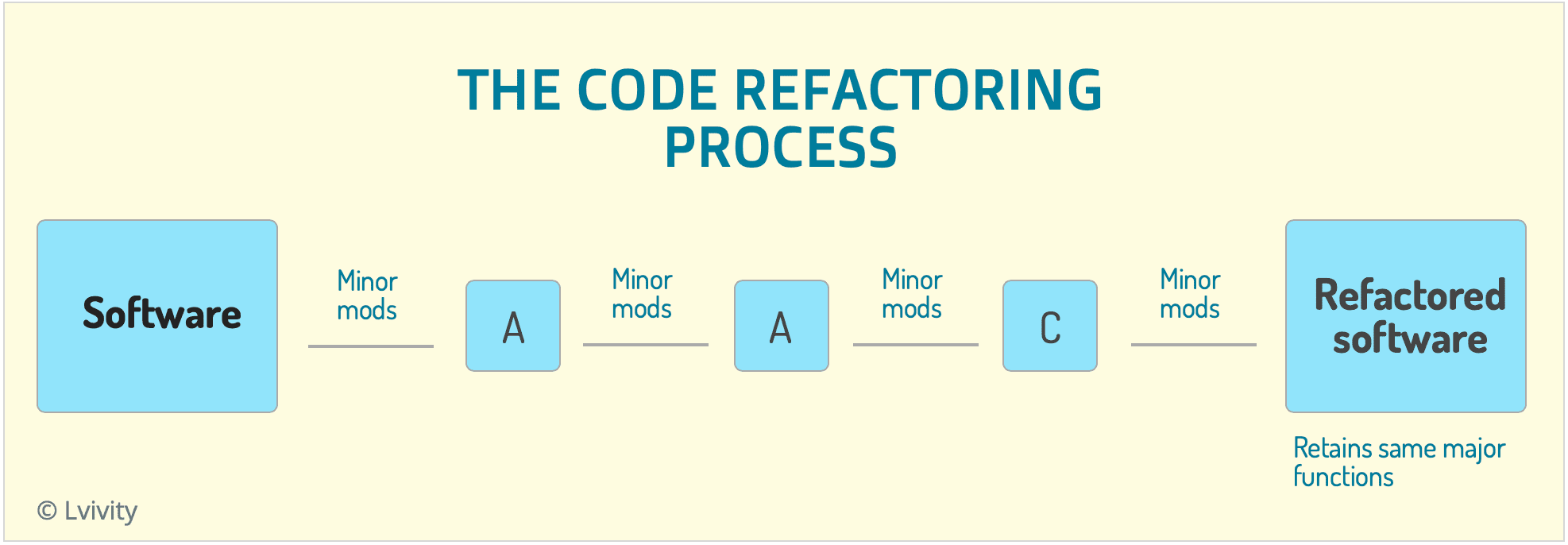Refactoring Regrets: The Pitfalls of Code Improvement

In the realm of software development, refactoring is a transformative process aimed at improving the structure and design of existing code without altering its functionality. While it holds promise for enhancing code readability, maintainability, and extensibility, it also carries certain risks, leading to unintended consequences known as “refactoring regrets.”

Unforeseen Side Effects:
One major pitfall lies in introducing unforeseen side effects. Refactoring may alter the behavior of code in subtle ways, leading to bugs and unintended consequences. This can be particularly problematic when dealing with complex codebases, where the interconnectedness of modules can make it challenging to predict the ripple effects of changes.
Increased Complexity:
In an attempt to improve code structure and organization, refactoring can inadvertently introduce additional complexity. As developers restructure code, they may create unnecessary abstractions or dependencies, obfuscating the original design and making it harder to understand and maintain. This can lead to increased technical debt and hinder future development efforts.
Performance Degradation:
While refactoring typically aims to improve code efficiency, there’s a risk of introducing performance bottlenecks. Changes to code structure, such as extracting functions or reorganizing data structures, can impact execution time in unforeseen ways. Thorough performance testing is crucial to avoid such regressions.
Loss of Contextual Knowledge:
Refactoring can result in the loss of contextual knowledge embedded in the code. Developers may restructure or move code blocks without fully understanding their original purpose or intent. This can lead to misunderstandings and maintenance challenges, as future developers may struggle to discern the rationale behind the changes.
Scope Creep:
The allure of improving code can sometimes lead to uncontrolled scope creep. As developers immerse themselves in the process, they may identify additional areas for improvement, leading to a never-ending cycle of refactoring. This can divert resources away from critical tasks and hinder progress on other aspects of the project.
To mitigate refactoring regrets, software teams should adopt cautious and well-defined approaches:

- Plan Carefully: Identify clear goals and scope for the refactoring effort. Plan incremental changes and avoid sweeping overhauls.
- Test Thoroughly: Conduct comprehensive testing before and after refactoring to ensure that the code functions as intended and has not introduced any regressions.
- Document Changes: Keep meticulous records of the changes made and the rationale behind them. This documentation will aid future developers in understanding the code’s evolution.
- Foster Collaboration: Involve multiple team members in the refactoring process to gain diverse perspectives and minimize the risk of introducing unforeseen changes.
- Measure and Evaluate: Continuously track metrics to assess the impact of refactoring and ensure that it meets the desired outcomes without compromising performance or maintainability.
By embracing these principles, development teams can minimize the chances of refactoring regrets and harness the power of refactoring to truly enhance the quality of their codebase.## Refactoring Regrets: When Attempting To Improve Code Goes Wrong
Executive Summary
Refactoring is a crucial practice in software engineering, aiming to improve code quality and maintainability. However, sometimes these efforts can backfire, leading to unexpected consequences and even project setbacks. This article delves into the pitfalls of refactoring, examining the reasons why it can go awry, and provides guidance on mitigating these risks.
Introduction
Refactoring, the process of modifying code to improve its structure and design without changing its functionality, is a double-edged sword. While it can enhance code quality, it also carries inherent risks, which can manifest in various forms, ranging from minor inconveniences to major project disasters. Understanding these risks and adopting a cautious approach is paramount to ensuring successful refactoring outcomes.
FAQs
What are the common reasons for refactoring regrets?
- Insufficient planning: Jumping into refactoring without thorough planning, impact analysis, and testing can sow the seeds for potential problems.
- Lack of testing: Inadequate testing, especially after refactoring is complete, can fail to detect errors that arise from code modifications.
- Excessive refactoring: Overzealous refactoring, often driven by a desire for perfection, can introduce unnecessary complexity and unintended consequences.
What are the signs that a refactoring effort is going awry?
- Increased bugs: A surge in bug reports or failed tests after refactoring suggests that something has gone amiss.
- Degraded performance: Changes to code structure or algorithms may inadvertently harm performance, leading to slower execution times.
- Reduced maintainability: Refactoring that complicates code structure or creates excessive dependencies can make future modifications more difficult.
Top 5 Subtopics
1. Lack of Planning
Planning is the cornerstone of successful refactoring. Key considerations include:
- Defining clear goals: Establish specific objectives and desired outcomes for the refactoring effort.
- Impact analysis: Assess the potential effects of refactoring on different parts of the codebase and dependent systems.
- Risk management: Identify and mitigate potential risks associated with the refactoring process.
2. Insufficient Testing
Thorough testing is essential throughout the refactoring process:
- Unit tests: Test individual components of the codebase to ensure they function as intended.
- Integration tests: Verify that refactored components interact correctly with the rest of the system.
- Performance tests: Monitor performance metrics to ensure refactoring has not introduced bottlenecks.
3. Overzealous Refactoring
Excessive refactoring can lead to unnecessary complexities and unintended consequences:
- Scope creep: Refactoring efforts can expand beyond their initial objectives, introducing unnecessary or disruptive changes.
- Architectural damage: Overzealous refactoring can alter the system’s architecture, potentially affecting its stability or scalability.
- Increased cognitive load: Complicated refactoring can make it harder for developers to understand and maintain the codebase.
4. Failure to Communicate
Clear communication is key during refactoring:
- Consult with stakeholders: Inform project stakeholders about the upcoming refactoring, its goals, and potential impact.
- Document changes: Keep detailed documentation of the refactoring process, including code modifications, rationale, and test results.
- Conduct code reviews: Encourage team members to review and provide feedback on refactored code before deployment.
5. Lack of Automation
Automation tools can streamline and improve refactoring outcomes:
- Automated testing: Use testing frameworks and tools to automate testing processes, ensuring thorough and efficient validation.
- Code linting: Utilize code linting tools to enforce coding standards and identify potential issues before refactoring.
- Refactoring tools: Employ specialized refactoring tools that provide support for safe code modifications, impact analysis, and test generation.
Conclusion
Refactoring can be a powerful technique for improving code quality and maintainability. However, it requires careful planning, thorough testing, and a balanced approach. By understanding the potential pitfalls and implementing risk mitigation strategies, developers can minimize the chances of refactoring regrets and harness the true benefits of code improvement.
Keyword Tags
- code refactoring
- refactoring risks
- mitigating refactoring risks
- software quality
- software maintenance
